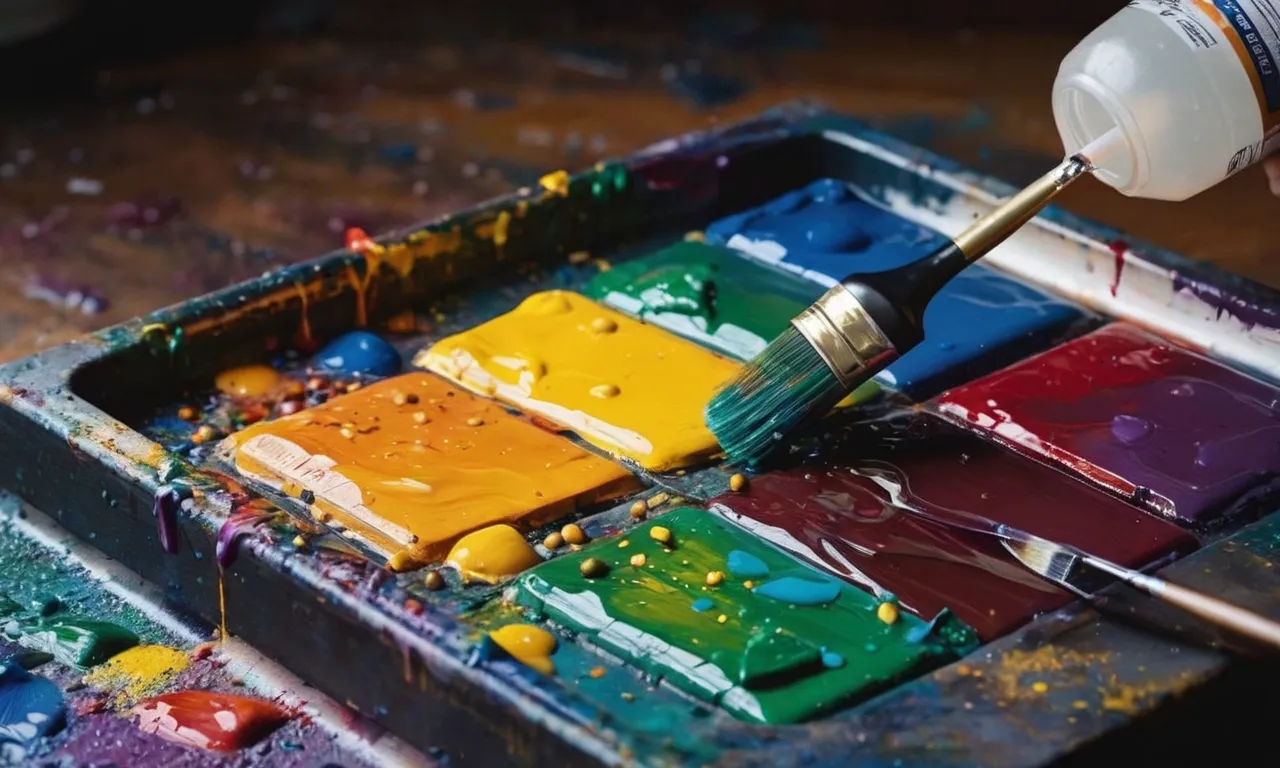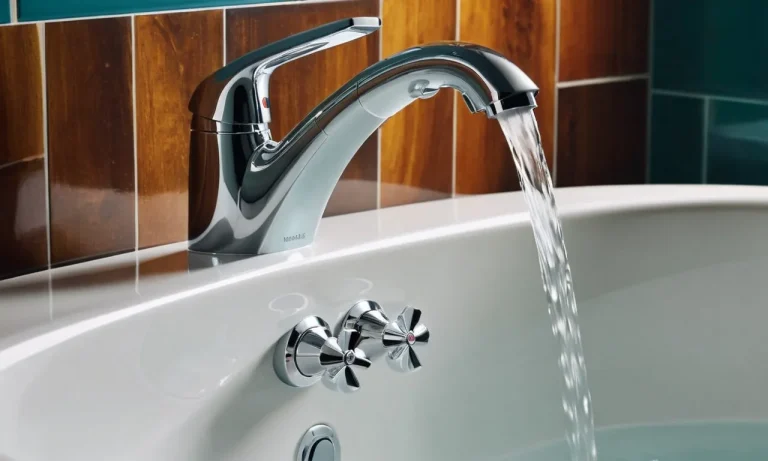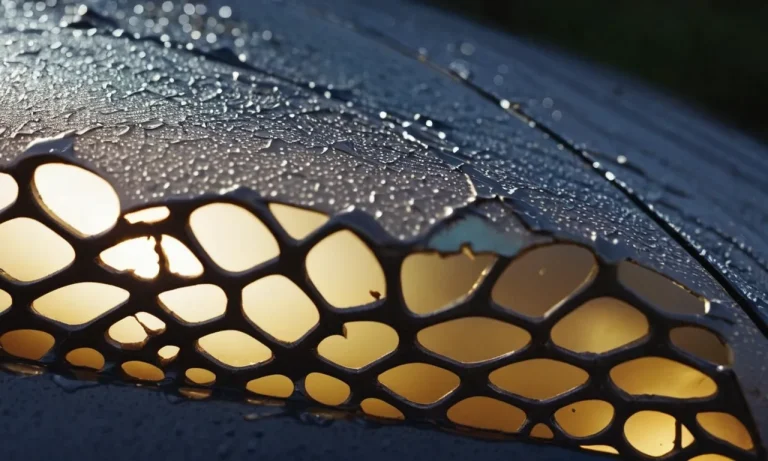How To Keep Acrylic Paint Wet: A Comprehensive Guide
If you enjoy painting with acrylics, you know the frustration of your paint drying out too quickly while you are still working on your masterpiece. Keeping acrylic paint workable for as long as possible is an age-old challenge for artists.
In this comprehensive guide, we will walk you through all the tips, tricks and techniques you need to keep your acrylic paint wet and usable for extended painting sessions.
We’ll cover specific products you can add to acrylic paint to slow drying time, methods for keeping paint wet on your palette and on your canvas, how to revive dried acrylic paint, environmental factors that speed up drying, and much more.
With the right strategies, you can work with acrylics for hours without having to stress about your paint drying up mid-brushstroke.
Add Mediums and Retarders
One of the most effective ways to keep acrylic paint wet and workable for longer periods of time is by using mediums and retarders. These additives are specifically designed to slow down the drying time of acrylic paint, allowing artists to have more control over their work and prevent it from drying too quickly.
Acrylic Retarders
Acrylic retarders are a type of additive that extends the drying time of acrylic paint. They are particularly useful when working on large or intricate paintings that require more time for blending and layering.
By adding a small amount of retarder to your paint, you can significantly increase its open time and keep it wet for longer. This gives you the flexibility to make adjustments and corrections as needed.
There are various brands of acrylic retarders available in the market, each with its own recommended usage instructions. It’s important to follow the manufacturer’s guidelines to achieve the best results. Some popular brands include Liquitex Slow-Dri Blending Fluid and Golden Acrylic Retarder.
Acrylic Mediums
Acrylic mediums are versatile additives that not only extend the drying time of acrylic paint but also provide a range of other effects and finishes. These mediums come in different forms, such as gel, fluid, or paste, and can be used to alter the consistency, texture, and transparency of the paint.
When it comes to keeping acrylic paint wet, using a slow-drying medium can be a game-changer. These mediums, such as Liquitex Slow-Dri Blending Gel or Golden Open Acrylic Medium, are specifically formulated to increase the drying time of acrylic paint without affecting its color or consistency.
They allow artists to work on their paintings for extended periods without worrying about the paint drying too fast.
Glycerin
Glycerin is a common household item that can be used as an alternative to mediums and retarders to keep acrylic paint wet. Adding a small amount of glycerin to your paint can help slow down the drying process and keep it wet for longer.
Simply mix a few drops of glycerin with your paint on your palette, and you’re good to go.
It’s important to note that glycerin should be used sparingly, as using too much can affect the paint’s consistency and drying time. It’s recommended to experiment with different proportions to find the right balance for your desired results.
Remember, while using mediums, retarders, or glycerin can help keep your acrylic paint wet, it’s still essential to work efficiently and plan your painting process. These additives provide you with more time, but you should still aim to complete your artwork within a reasonable timeframe to avoid any potential issues with the paint’s long-term stability.
Keep Your Palette and Paintbrush Wet
When working with acrylic paint, it’s important to keep your palette and paintbrush wet to ensure the paint remains workable and doesn’t dry out too quickly. This allows you to have more control over your brushstrokes and gives you the ability to blend colors seamlessly.
Here are some effective ways to keep your palette and paintbrush wet:
Use a Wet Palette
A wet palette is a great tool for keeping your acrylic paint wet for extended periods of time. It consists of a shallow container with a sponge or paper towel soaked in water at the bottom, topped with a sheet of parchment or palette paper where you squeeze out your paint.
The moisture from the sponge or paper towel keeps the paint on the palette moist and workable for hours, allowing you to continue working without worrying about the paint drying out.
Using a wet palette not only keeps your paint wet, but it also helps prevent your paint from drying too quickly, which can lead to wasted paint and frustration. It’s a simple and effective method that many artists swear by.
Store Brushes in Water
When you’re taking a break from painting or need to keep your brushes wet between sessions, storing them in water can help keep them in optimal condition. Simply fill a container with enough water to cover the bristles of your brushes and place them in the water while you’re not using them.
However, it’s important to note that you should never leave your brushes soaking in water for long periods of time, as this can damage the bristles. Instead, periodically rinse the brushes with clean water and reshape the bristles to maintain their shape and prevent them from becoming too soft.
Use an Airtight Palette Box
If you’re working on a project that requires you to keep your paint wet for an extended period, using an airtight palette box can be a game-changer. These boxes are specifically designed to keep your paint fresh and moist for days, allowing you to work on a painting over multiple sessions without worrying about the paint drying out.
An airtight palette box typically has compartments or wells where you can squeeze out your paint, and a lid that creates a seal to keep air out. This prevents the paint from drying out and allows you to pick up right where you left off, without any noticeable changes in color or consistency.
It’s important to mention that while these methods can help keep your paint wet, they may not be suitable for all situations or preferences. It’s always a good idea to experiment and find the method that works best for you and your painting style.
Control the Paint Consistency and Environment
When it comes to keeping acrylic paint wet, controlling the paint consistency and the surrounding environment are key factors. By understanding how to manipulate these elements, artists can extend the working time of their acrylic paints and achieve the desired effects.
Thin Layers of Paint
One effective way to keep acrylic paint wet is to apply thin layers of paint. Thick layers of paint tend to dry faster, while thin layers take longer to dry. By using thin layers, artists can have more control over the drying time and make adjustments as needed.
This technique is especially useful for blending colors or creating smooth transitions.
High Humidity
Humidity plays a significant role in the drying time of acrylic paint. Higher humidity levels slow down the drying process, allowing artists to work with the paint for longer periods. To increase the humidity in your working area, you can use a humidifier or place a water tray nearby.
However, it’s important to strike a balance as excessive humidity can affect the paint’s consistency and cause other issues.
Cooler Temperatures
Lowering the temperature in your working space can also help keep acrylic paint wet for longer. Cooler temperatures slow down the evaporation of water from the paint, giving artists more time to work. However, it’s worth noting that extreme temperatures can affect the paint’s consistency and even cause it to freeze.
It’s best to maintain a moderate temperature for optimal results.
Remember, experimenting with different techniques and finding what works best for you is part of the artistic process. By controlling the paint consistency and environment, artists can have more control over their acrylic paints, allowing for greater creativity and flexibility in their artwork.
Revive Dried Acrylic Paint
There’s nothing more frustrating for an artist than discovering dried acrylic paint on their palette or canvas. However, don’t worry, because there are several methods you can try to revive dried acrylic paint and save your artwork.
Here are three effective ways to bring your dried acrylic paint back to life:
Remoisten with Water
If your acrylic paint has only recently dried, you can try remoistening it with water. Simply wet a clean brush with water and gently mix it into the dried paint. This will help to soften the paint and make it easier to work with.
However, be cautious not to add too much water, as it can dilute the pigments and affect the color intensity of your paint.
Use Mediums and Oil
Another option to revive dried acrylic paint is to use mediums and oil. Acrylic mediums are specially formulated to increase the working time of acrylic paint and keep it wet for longer. They come in various types, such as retarders, glazing mediums, and flow improvers.
Simply mix a small amount of the medium into your dried paint, and it will soften and become more workable again.
Alternatively, you can also try adding a few drops of oil, such as linseed oil or walnut oil, to your dried acrylic paint. This can help to rehydrate the paint and make it easier to manipulate. However, keep in mind that adding oil to acrylic paint can alter its drying time and finish, so it’s best to experiment on a small test surface before applying it to your artwork.
Scrape Off Dried Paint
If your dried acrylic paint is too hard and cannot be revived with water or mediums, you may need to consider scraping it off. Use a palette knife or a razor blade to carefully scrape away the dried paint from your palette or canvas.
Be gentle and take your time to avoid damaging the surface underneath. Once the dried paint is removed, you can start fresh with new paint and continue working on your artwork.
Remember, prevention is always better than cure when it comes to keeping acrylic paint wet. To avoid your paint from drying out too quickly, make sure to keep your palette covered when not in use, mist your paints with water during extended painting sessions, or use a stay-wet palette system.
By taking these precautions, you can minimize the chances of your acrylic paint drying out and maximize your painting time.
Store Unused Paint Properly
When it comes to keeping acrylic paint wet and usable for future projects, proper storage is key. By following a few simple guidelines, you can ensure that your unused paint remains in good condition for an extended period of time.
Air-tight Containers
One of the best ways to store acrylic paint is in air-tight containers. These containers prevent air from reaching the paint, which helps to slow down the drying process. You can find a variety of air-tight containers specifically designed for storing paint at your local art supply store or online.
Make sure to transfer the paint from its original container to these air-tight containers as soon as possible to maximize their effectiveness.
Pro Tip: Label each container with the color and date of purchase to keep track of your paint inventory easily.
Freezer Storage
Believe it or not, another effective method for keeping acrylic paint wet is by storing it in the freezer. Freezing the paint can significantly slow down the drying process, allowing you to use it for longer periods.
However, it’s important to note that not all acrylic paints are suitable for freezing. Check the manufacturer’s instructions or website for specific guidelines on freezing your particular brand of acrylic paint.
Pro Tip: Use small containers or freezer-safe bags to store individual paint colors. Thaw the paint at room temperature before using it again, and make sure to mix it thoroughly to restore its original consistency.
Remember, proper storage is essential for keeping your acrylic paint wet and usable for future projects. By utilizing air-tight containers or freezer storage, you can extend the lifespan of your paint and save money in the long run.
Experiment with different storage methods to find the one that works best for you and your painting needs.
Conclusion
With acrylic paint’s fast drying time, keeping it usable for extended periods can be a challenge. However, with the right additives and techniques, you can greatly extend your working time with acrylics before they dry out.
Use acrylic retarders, keep your palette wet, control the environment, revive dried paint, and store properly for the best results. With a bit of planning and some simple tips, you can enjoy slow-drying, smooth-flowing acrylics for all your masterpieces.







